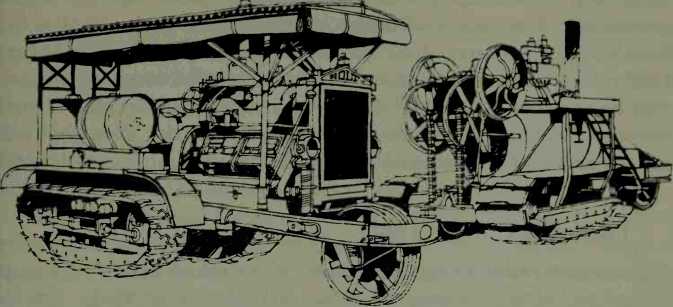Napoleon’s victories depended entirely upon offense. But while the world’s generals in after years studied them and trained their armies accordingly, every military invention and development strengthened defense. In the second half of the nineteenth century, Henry Bessemer’s process for manufacturing steel made it cheaper and better. With steel, guns became more efficient and barrels could be rifled to spin the missile so that its gyroscopic effect provided greater accuracy. Machine guns and barbed wire made frontal assault by infantry more and more hazardous, while iron, brick, and masonry gave way to concrete and reinforced concrete that made fortifications immensely strong.
It was defensive strength which brought a stalemate to the Western Front in the First World War. Massed armies faced each other in a siege warfare that depended upon naval blockades for each belligerent to starve the other into submission. But for many years all the components of a mobile armored weapon—which held out a promise of breaking the deadlock—had been available. The invention of the steam engine led to wheeled vehicles used on roads. By the time of the Crimean War (1853-1856), steam tractors, with flaps on the wheels, were being used to haul heavy guns into position more quickly and more efficiently than horses. Although the British Army was using “mechanical horses” as prime movers in the Boer War of 1899, the design for an armored version was filed away in 1912 and forgotten.
By that time the Holt Company in the United States had got a good linked track onto the steam tractors that were used in the soft delta land of Louisiana. After the First World War began, more than one soldier suggested armoring a Holt tractor for use as a weapon, including a French colonel, J.-E. Estienne, and Lieutenant Colonel E. D. Swinton, an Englishman, who was told that such a weapon would be too vulnerable to enemy artillery fire. Most things that the Allied High Command did, or refused to do, at this time were based upon the belief that everything was vulnerable to enemy artillery fire.
In 1914, when British naval aircraft were based in Belgium to fight the German airships, armored cars with Royal Navy crews were assigned to the role of airfield defense. This provided Winston Churchill, then First Lord of the Admiralty, with reason to take an interest himself in land warfare. He also took up the idea of fitting armor to artillery tractors and asked if they could be modified to cross trenches.
Churchill would not take no for an answer and insisted upon a

FIGURE I.
The Holt “75” caterpillar tractor used for towing heavy artillery on the Western Front (left), developed from the first regular production model crawler of 1906 (right).
Demonstration. In February 1915 his committee watched a Holt tractor, its performance impaired by bad weather. The committee decided that the machine was useless, but Churchill ignored their advice. He ordered work to proceed.
I thus took personal responsibility for the expenditure of the public money involved, about seventy thousand pounds. I did not invite the Board of Admiralty to share this responsibility with me. I did not inform the War Office, for I knew they would raise objections to my interference in this sphere, and I knew by this time that the Department of the Master General of the Ordnance was not very receptive of such ideas. Neither did I inform the Treasury.24
So it came about that the tracks of the new vehicle were designed by Lieutenant W. Wilson of the Royal Naval Air Service. He worked with Mr. W. Tritton of Fosters of Lincoln, using American parts and boiler plate as armor. Dissatisfied with their first machine, the men assembled a much-improved version. Their second design was of the more familiar diamond shape. On Lord Salisbury’s golf course the great monster demonstrated its ability to cross 9-foot-wide trenches. The army ordered 100 of them, describing them as water tanks for security reasons. The name stuck.
BLITZKRIEG
Tank. He saw its value as a surprise weapon and was convinced that it could deal a swift and mortal blow to the Germans. But the higher commander disagreed. Sir Douglas Haig, Commander in Chief of the British Army in France, told the Tank Supply Committee in August 1917, “[The] tank at any rate in its present state of development, can only be regarded as a minor factor... an adjunct to infantry and guns. . .” For Lord Kitchener, Secretary of State for War, the tank was no more than a “pretty mechanical toy.”




 World History
World History









